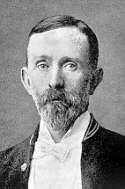 Sophia Morrison's contribution to Dictionary of National
Biography
Sophia Morrison's contribution to Dictionary of National
Biography Sophia Morrison's contribution to Dictionary of National
Biography
Sophia Morrison's contribution to Dictionary of National
Biography
MOORE, Arthur. William (1863-1909),Manx antiquary, born on 6 Feb. 1853 at Cronkbourne, Douglas, Isle of Man, was one of ten children (five sons and five daughters) of William Fine Moore, J.P., owner and controller of the Tromode Sail-cloth Mills and a member of the self-elected House of Keys. His mother was Hannah, daughter of Henry Curwen Christian Curwen, of a Cumberland family. William Christian, 'Illiam Dhone' [q. v.], was an ancestor. Entering Rugby under Dr. Temple on 6 Feb. 1867, he passed to Trinity College, Cambridge, where he was bracketed second in the historical tripos of 1876 with Mr. Gordon Duff and graduated B.A. in 1876, proceeding M.A. in 1879. He distinguished himself in athletics at Cambridge and won his blue for Rugby football.
Moore devoted his adult activities to the welfare of his native island in all its phases. Succeeding his father as head of the sail cloth firm, he managed it with success until steamship competition destroyed the business. He was also director of the Isle of Man Steam Packet Co., of which he published an historical account, and of the Isle of Man Banking Co. Placed on the commission of the peace in 1877, he became member of the House of Keys in 1881, and being elected speaker in 1898, held the office till death. He ably championed the rights and privileges of the house when the house came into conflict with the governor and council. He took part in drawing up the petition for a reform of the Manx Constitution in 1907. He was also a member of the council of education for the island (1888), of the harbour board (1899), and of the Manx Diocesan Church Commissioners, and became deputy receiver general in 1905. He interested himself in meteorology, publishing a pamphlet on the climate of the island in 1899 and a record of ' Earth Temperatures at Cronkbourne 1880-9,'in the 'Royal Meteorological Soc Quarterly Journal' (ox., Oct. 1894). He was president of the Isle of Man Agriculture Society in 1883. In 1902 he received King Edward VII on his visit to the island, and was created C.V.O. in the same year.On Manx antiquities Moore was the chief authority in the island, and was one of the museum and ancient monuments trustees from the formation of that body in 1886. Moore's chief title to fame is as the promoter of the study of the Manx language and of Manx history. Ho only learned the language in early manhood, at a time when it and its literature were despised by his educated fellow countrymen and threatened with extinction. He sketched the history of the language and the sources of knowledge respecting it in a paper printed by the Natural History and Antiquarian Society of the isle in 1887. In 1899 he founded the Manx Language Society and became its first president. Assisted by (Sir) John Rhys, he in 1893 edited for the Manx Society for the Publication of National Documents ' The Book of Common Prayer in Manx Gaelic,' the earliest and longest MS. in the language. He sought to conserve not only the language but the music, lore, and tradition of the island, and published the results of his labours in such volumes as ' The Surnames and Place Names of the Isle of Man' (1890) ' Folk-Lore of the Isle of Man ' (1891) ' Manx Carols ' (1891); ' Further Notes on Manx Folk-Lore' in 'The Antiquary' (1895), and ' Manx Ballads and Music ' (1896). Moore's 'History of the Isle of Man' (1900) is the one authoritative book on the subject. He also published 'The Diocese of Sodor and Man' (1893), 'Manx Worthies ' (1901); 'Bishop Hildesley's Letters' (1904); 'Douglas 100 Years Ago ' (1904), and 'Extracts from the Records of the Isle of Man' (1905). He edited the periodical ' The Manx Note Book' (1885-7), and contributed many articles to that and other learned magazines.
Moore, who was appointed official translator of the Acts of Tynwald into Manx was a vice-president of the Celtic Association, and at the eisteddfod held at Cardiff in 1899 the degree of Druid was conferred upon him in recognition of his services to Manx literature. He collected materials for a book on Anglo-Manx dialect which was not completed at his death. He died at Woodbourne House, Douglas, 12 Nov 1909, and was buried at Kirk Braddan cemetery.
On 24 Feb. 1887 he married Elizabeth Wynn, daughter of Dr. Games, then Archdeacon of Man and subsequently vicar of Hull. He left one son and two daughters. A bust by Mr. Taubman, a Manx sculptor in London, and unveiled at Douglas by Lord Raglan on 10 Oct. 1911, stands in the chamber of the House of Keys; and a portrait by the Liverpool artist R.E. Morrison, President of the Liverpool Manx Society, was presented by the artist to the House of Keys.
[Celtic Review, 16 Jan. 1910; Isle of Man Weekly Times, 13 Nov. 1909, Isle of Man Examiner, 20 Nov. 1909, information from the Misses Moore.] SM
A much fuller biography, by John Quine, serves as the preface to his posthumously published Nessy Heywood; see also appreciation and biography by W Cubbon in Island Heritage chap 35 pt II p321/3. See also Memorial Notice in Manx Quarterly.
It is my intention to have all A.W.Moore's books on-line - for those currently available see Books by A.W.Moore.
See also Old Manx Families - Moore's of Pulrose
Robert Fyson The Anglo-Manxman A Life of A.W. Moore Douglas: Manx Heritage Foundation 2009 (ISBN 978-0-9562064-2-8)
|
|
||
|
Any comments, errors or omissions
gratefully received The
Editor |
||